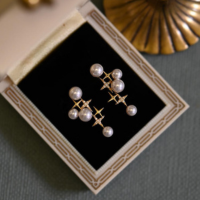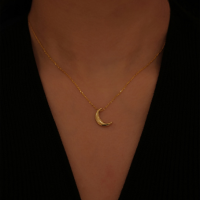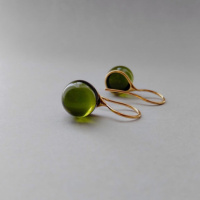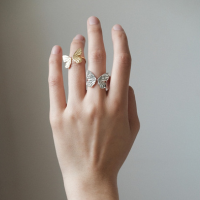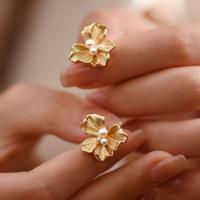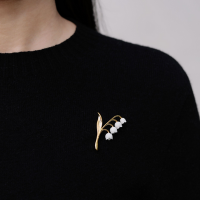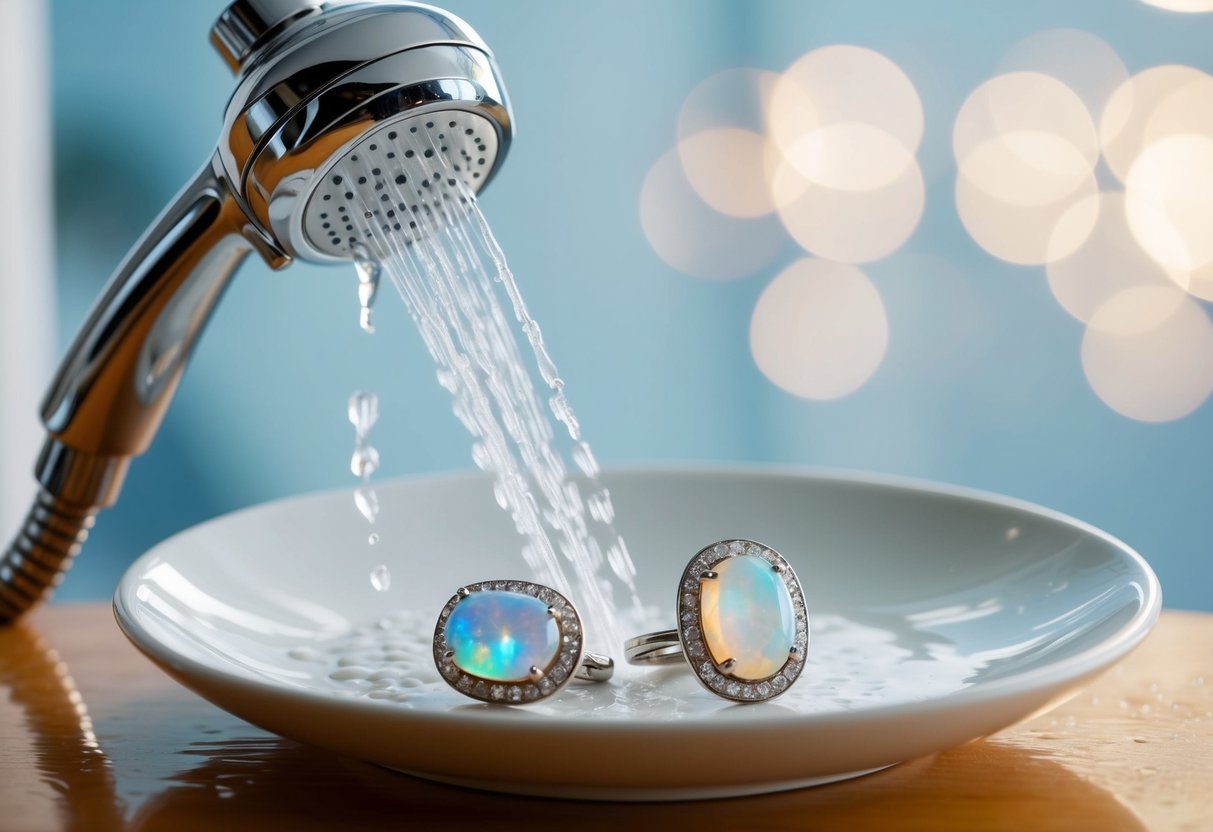
The Ultimate Guide to Brooches: Styles, History, and Modern Uses
Check out our personalized jewelry collections! (kids drawing jewelry, coin jewelry, wire jewelry, fingerprint jewelry, handwriting jewelry, and more)
Brooches have fascinated people for centuries with their captivating designs and distinguishing flair. From ancient times to modern fashion, these unique pieces have adorned clothing and told stories through their intricate styles. Today, brooches are more than just decorative items; they are versatile accessories that enhance personal style.
As we explore the world of brooches, we will uncover how they have evolved over time. From ancient Roman brooches to Victorian masterpieces, each era brings something special to the table. By understanding the materials and craftsmanship behind these pieces, we gain a better appreciation for their timeless appeal.
In the modern world, brooches are making a statement in fashion and personal expression. Whether adorning a formal outfit or adding flair to casual wear, they are perfect for any occasion. Let’s dive into their various uses, care tips, and how we can incorporate them into our style.
Key Takeaways
- Brooches have a rich history and timeless appeal.
- They are versatile pieces that enhance any outfit.
- Caring for brooches maintains their beauty and value.
The Evolution of Brooches
Brooches have a rich history that spans centuries. They have transformed from functional fasteners into decorative symbols of fashion and status.
Ancient Beginnings
In the earliest days, brooches were more about practicality than style. People needed a way to fasten clothing, and brooches did the job. During the Bronze Age, around 3,000 years ago, these items were made from simple materials like bone, wood, and metal.
Greek and Roman civilizations added their own flair. They created brooches known as fibulae, which were both practical and decorative. These ancient pieces often featured intricate designs and were sometimes inlaid with precious stones. The artistry shown back then set the foundation for brooches as more than just functional items.
Medieval to Renaissance Flourish
Brooches really came into their own during the Medieval period. They were essential accessories, showing one's status and wealth. People in the upper classes adorned their brooches with gold and gems. They even used them to display family crests or religious symbols.
During the Renaissance, the craftsmanship of brooches reached new heights. Jewelers experimented with more elaborate designs, incorporating enamels and minute details. Brooches from this era were often elaborate and vibrant, reflecting the time’s artistic sensibility and the growing appreciation for beauty in everyday items.
Victorian Era Elegance
The Victorian era marked a golden age for brooches. Queen Victoria's love for these accessories spread throughout her realm. She often wore brooches made of jet, and this trend became popular during the period of mourning.
Victorian brooches are notable for their variety and detail. Some featured romantic symbols or hair from a loved one. Materials ranged from gold and pearls to colorful gems. The intricate designs and personal touch make them a fascinating part of jewelry history.
Modern Twists on a Classic Accessory
Today, brooches have evolved to suit modern fashion senses. Designers create new styles that blend traditional elements with contemporary flair. We see them in all sorts of shapes, often made of unconventional materials like plastics or bright fabrics.
Modern brooches serve both as statement pieces and everyday accessories. They are versatile and can be worn on clothing, hats, or bags, giving us countless ways to express our personal style. Brooches, in their varied forms, continue to captivate jewelry lovers around the world.
Identifying Different Styles
Each style of brooch carries a unique charm and historical significance. From the intricate designs of cameo brooches to the playful shapes of figurative brooches, there's something for every taste. Let’s explore these fascinating styles in detail.
Cameo Brooches
Cameo brooches are known for their raised relief designs, often depicting faces or scenes in contrasting colors. These brooches became popular during the Victorian era. Typically made of materials like agate, onyx, or shell, they usually feature portraits of women or mythological figures.
The craftsmanship involves carving the design into a single material, creating a raised, sculpted look. Modern cameo brooches can include unique themes and are often treasured as heirlooms. Whether vintage or new, the elegance of a cameo brooch adds sophistication to any outfit.
Enamel Brooches
Enamel brooches boast vibrant colors and smooth finishes. Created using powdered glass fused onto metal, enamel work offers artists limitless creative possibilities. Common designs include floral patterns, abstract shapes, and scenes from nature or folklore.
These brooches became especially popular in the Art Nouveau period but remain loved by many today. We often see them adorned with gemstones, lending extra sparkle. The glossy appearance makes them stand out, appealing to both fashion enthusiasts and collectors alike. Their durability and color retention ensure that enamel brooches remain beautiful for many years.
Figurative Brooches
Figurative brooches come in entertaining shapes like animals, people, or whimsical objects. Designed to add a playful or creative touch to apparel, these brooches vary widely in detail and size. Popular in the mid-20th century, they continue to charm those who appreciate fun and unique jewelry.
Materials range from metal and plastic to gemstones and crystals. This diversity allows for a great expression of personal style. Some figurative brooches have moving parts or interactive elements, boosting their appeal. They’re delightful conversation starters and fantastic gifts for any jewelry lover.
Bar Brooches
Bar brooches are sleek, elongated designs known for their simplicity and elegance. Often used to fasten clothing or adorn lapels, these brooches can be minimalist or richly embellished. Common materials include gold, silver, and platinum, sometimes adorned with small gems or intricate engravings.
They rose to prominence during the early 20th century but remain a timeless choice. Bar brooches are a favorite for those who love both subtle and sophisticated jewelry. Whether worn at a formal event or a casual outing, these brooches add a touch of elegance to any attire.
Bouquet Brooches
Bouquet brooches feature floral designs, celebrating the beauty of nature. These are charming, versatile adornments that can be quite colorful. Commonly crafted from metals like gold and silver, they often incorporate precious stones to represent different flowers.
This style gained popularity during the Victorian era and continues to enchant wearers today. We often choose bouquet brooches for special occasions like weddings or anniversaries. Their natural motifs symbolize love, growth, and beauty, making them meaningful gifts for loved ones.
Materials and Craftsmanship
Brooches come in various styles, made from different materials with unique craftsmanship techniques. From precious metals to modern materials, these elements determine a brooch’s value and appearance. Understanding the materials used and how they are crafted helps us appreciate their beauty and durability.
Gold and Silver Standards
Gold and silver have always been classic choices for brooches. Gold is often used in 14k or 18k forms, with pure gold usually mixed with metals like copper or nickel to improve strength. This alloying affects the color and durability. Sterling silver is popular in shiny and oxidized finishes, adding a vintage flair. These metals provide quality and longevity that many jewelry lovers cherish.
Different finishes like matte or polished offer unique looks. Selecting between gold and silver often depends on personal style and how well it complements other jewelry pieces in our collection.
Gemstone Embellishments
Gemstones add color and elegance to brooches. Common stones like diamonds, emeralds, and sapphires bring a touch of luxury. Each gemstone has unique characteristics based on cut, clarity, and color. We often find cabochon or faceted cuts in brooches, highlighting the stone’s sparkle and depth.
The setting style also matters, whether it’s prong or bezel, as it affects the gemstone's display. Opting for genuine or synthetic stones allows us versatility in cost and style. Both natural and lab-created stones have their own charm and appeal to different preferences.
Enameling Techniques
Enameling offers vibrant colors and intricate designs. Artists coat the surface with powdered glass and then heat it to create a smooth, colorful finish. Cloisonné and champlevé are popular methods that design lovers admire.
Cloisonné uses fine wires to create compartments for the enamel, resulting in detailed, raised patterns. Champlevé involves carving out recesses in the metal to fill with enamel. These techniques require precision, adding artistic value to our brooches. Enamel adds a creative and personal touch, making each piece unique.
Innovative Materials
Contemporary brooches often feature unexpected materials. Acrylics, resins, and even reclaimed materials push boundaries and allow for creative expression. These materials can transform traditional brooch designs into something more modern and accessible.
For example, lightweight acrylics can be molded in various shapes, while recycled metals or textiles introduce sustainability. The use of innovative materials appeals to our love for originality and breaking away from convention. This diversity lets us find pieces that align with personal values, style, and current trends.
Function and Fastening Mechanisms
When it comes to brooches, the way they attach to clothing plays a key role in their function and safety. Let's explore different clasps and fastening solutions that keep these pieces secure and stylish.
Trombone Clasp
The trombone clasp is named after its clever sliding mechanism. We recognize it by the tube that slides over a pin to lock it in place, resembling a trombone’s slide movement. This clasp is not only secure but also discreet, making it an attractive choice. It's usually found on vintage brooches from the early 20th century. We appreciate its reliability because it withstands daily wear and keeps our brooches safely put.
C Clasp
The C clasp is one of the earliest fastening designs. It includes a simple hook or "C" shape that holds the pin in place. Though not as secure as modern designs, it offers a vintage charm. We often see it on antique brooches, giving them historical value. While wearing brooches with this clasp today, we need to be cautious, as pins can unexpectedly slip out if not handled gently.
Safety Pin Clasp
We find the safety pin clasp to be a practical solution for brooches in our everyday fashion. It works just like a standard safety pin, providing a straightforward way to attach and remove jewelry. This clasp adds a casual feel to brooches, ensuring they're tightly secured to clothes. It's perfect for active individuals since their sturdy design prevents accidental unfastening during movements.
Magnetic Solutions
Magnetic fastenings offer ease and innovation. They provide simple yet effective attachment methods, ideal for lightweight brooches. Magnets eliminate the need for piercing fabrics, which suits delicate clothing and materials. We can adjust brooches easily while experimenting with styles, as they can be repositioned quickly. However, heavier pins may not hold as securely, so choosing appropriate designs is essential for best results.
Accessorizing with Brooches
Using brooches can enhance outfits in unique ways, whether pinned traditionally on a lapel or styled with contemporary ideas. It's important to know how to securely attach them to different fabrics and how to layer with other jewelry pieces.
Traditional Lapel Placement
Brooches have long adorned lapels as symbols of elegance. Traditionally, we place them on the left lapel. This placement is common in formal settings, from weddings to corporate events.
It's crucial to match the brooch size with the lapel width. A larger brooch can overpower a slender lapel. Meanwhile, a small brooch is subtle yet effective on a narrow area.
Choosing brooches that complement the outfit’s color can make a statement. For example, a silver brooch pairs well with a dark suit. This adds a sophisticated touch. Using our brooches this way highlights the wearer’s face and compliments their attire.
Contemporary Styling Ideas
Today, brooches are worn in diverse and creative ways. We can pin them to a hat or beret for a chic look. Jeans provide another canvas; attach one to a back pocket or near the hip for a retro vibe.
Stacking brooches is another modern approach. Cluster them together on a bag or shirt for greater effect. This creates an eye-catching element that stands out in casual settings.
When designing new styles, we should always consider the brooch’s theme and design. A floral brooch can boost a spring outfit, while geometric shapes offer a modern twist. These choices can easily refresh our wardrobe.
Securing Brooches to Different Fabrics
Safety and security matter when fastening brooches. We must adjust techniques based on fabric types. For delicate materials like silk, lighter brooches with smooth pins are best. This avoids damage and preserves the garment.
In contrast, heavier fabrics like wool can support larger brooches. We might use locking mechanisms or special clips for added security on such materials.
Paying attention to fabric weave is important. Sturdy materials require robust pins, while finer fabrics might need gentle handling. This can ensure our brooch stays in place without tearing the fabric.
Layering with Other Jewelry
Brooches can blend seamlessly with other jewelry. Necklaces and earrings offer stylish layering possibilities. When pairing, we should consider metal tones and styles for a cohesive look.
Using a brooch with similar hues to a necklace can create harmony. For example, a gold brooch matched with gold chains is appealing. Balance is vital in mixing bold brooches with delicate jewelry. It’s best to pick one feature piece to stand out.
Layering allows us to express personal flair. By experimenting with various combinations, we can craft looks that are uniquely ours, enhancing our overall jewelry collection.
Brooches in Popular Culture
Brooches have made their mark in movies, TV shows, and on the red carpet. Many of us remember the sparkling brooches worn by characters in classic films. These pieces often reflect a character’s personality or status.
In the world of fashion, brooches have been embraced by designers and celebrities. Lady Gaga, for instance, has famously worn brooches as statement pieces during major events. Her bold choices remind us how a single brooch can elevate an outfit.
Royal families also love brooches. The British royal family, for example, has a collection of iconic brooches. Queen Elizabeth II was often seen wearing them for official appearances, which adds a touch of elegance and tradition.
Brooches are not just for women. Many male celebrities have sported brooches as part of fashionable looks. These pieces can add an unexpected flair to suits and jackets, breaking the norm and showing that brooches are versatile.
Collecting and Caring for Brooches
Collecting brooches is a delightful hobby that requires knowledge and attention to care. It's key to know how to start a collection, maintain pieces, and assess their value.
Starting A Collection
When we begin collecting brooches, it's all about finding styles that speak to us. Start by deciding on specific eras or designers that catch your interest. Art Deco and Victorian brooches, for example, each have their own charm.
Next, visit auctions, estate sales, and online marketplaces. These are treasure troves for finding unique pieces. Always ask sellers about the history and authenticity of the brooch. Networking with other collectors can also provide valuable insights and connections. Broaden our horizons by joining collector groups or attending jewelry shows.
Maintenance & Preservation
Caring for our brooches involves proper cleaning and storage methods. Use a soft cloth to gently clean pieces, and avoid harsh chemicals that could damage delicate stones or metals. When storing brooches, keep them in a soft, lined jewelry box or a velvet pouch to prevent scratches.
Temperature and humidity are also important. Keep our brooches away from extreme temperatures and direct sunlight. If a brooch has pearls or other sensitive materials, be extra mindful of its environment. Regular checks for loose stones or broken clasps help ensure every piece remains in top condition.
Authentication and Valuing
Determining the authenticity and value of brooches is crucial for any collector. Examining hallmarks or signatures on the back can provide information about the origin and maker. We might use a magnifying glass for this, as some marks are tiny.
When unsure, consulting a professional appraiser is our best step. They can help us accurately assess the value of our collection, considering factors like age, material, and craftsmanship. It’s also helpful to keep records, including purchase receipts and appraisals. Understanding current market trends can aid us in making informed decisions.
Incorporating Brooches in Modern Fashion
Brooches are making a significant impact in modern fashion, from bridal outfits to runway trends and everyday wear. Let's explore these styles and see how brooches are being used today.
Bridal and Ceremonial Uses
Brooches add a personal touch to wedding and ceremonial attire. Brides often pin elegant brooches to their veils or gowns for added sparkle. Vintage designs can complement heirloom jewelry, creating a sentimental connection.
In addition, brooches serve as thoughtful gifts for bridesmaids. They can match the theme or color scheme of the wedding, providing a uniform yet individualized look. Custom initial brooches are popular options too, representing a special token for the big day.
Runway and Designer Trends
In high fashion, brooches are no longer just accessories. Designers integrate large, statement pieces into runway collections, often using unique materials like acrylic or semiprecious stones. These bold brooches capture attention and become focal points of outfits.
Fashion houses have revived many classic brooch styles. Art Deco and Victorian-inspired designs add a historical flair to contemporary garments. Layering multiple brooches on jackets and coats creates a textured, modern look, emphasizing creativity and artistic expression.
Casual Wear Incorporation
Brooches are also finding their way into everyday fashion. Simple, minimalist designs can accent casual wear without overpowering it. Adding a brooch to a denim jacket or backpack can express individual style.
Additionally, brooches are versatile and can transform basic pieces. Pinning them on hats, scarves, or sweaters offers new ways to refresh a wardrobe. Using varied sizes and designs can create dynamic looks suitable for any casual outing or gathering.
Gifting Brooches
Brooches make meaningful gifts, often carrying personal significance, especially when thoughtfully chosen. Packaging plays a crucial role in making the gift experience memorable. They’re ideal for milestone events, celebrated for their timeless beauty and personal touch.
Personal Significance
When gifting a brooch, it's essential to consider the recipient's style and preferences. Brooches can hold sentimental value, often symbolizing personal connections or cherished memories. We should select designs that reflect the recipient’s personality or interests, like favorite flowers, animals, or hobbies.
Customizing brooches by engraving initials or meaningful dates can add a special touch. Handmade or vintage pieces can also convey uniqueness, reinforcing the personal bond. By choosing thoughtfully, a brooch can become a treasured keepsake.
Importance of Packaging
Beautiful packaging enhances the gifting experience. We can choose elegant boxes or pouches with soft fabric linings to protect the brooch and add a luxurious feel. Thoughtful details, like ribbons or decorative paper, also add charm.
Including a personal note or card can express sentiments and tell the story behind the brooch, strengthening the emotional connection. By investing time and creativity into packaging, we show care and intention, making the gift memorable and cherished.
Gifting for Milestone Events
Brooches are perfect for celebrating significant life moments. They can symbolize achievements, commemorate anniversaries, or mark special birthdays. When selecting a brooch for milestones, consider timeless styles that the recipient can wear for various occasions.
For weddings, brooches can be given as gifts to bridesmaids or mothers and worn as elegant accessories on the big day. For anniversaries, choosing a brooch with elements that represent the years together, like specific stones, can add sentimental value.
Frequently Asked Questions
Our exploration of brooches spans their history, various styles, and evolving uses in fashion. We discuss their origins, how fashion trends influenced them, and tips for identifying antique pieces today.
What are the origins and historical significance of brooches?
Brooches date back to ancient times. They were initially used as practical items to fasten clothing. Over centuries, they became decorative, reflecting cultural symbols and societal status.
How do brooches reflect changes in fashion trends through the ages?
As fashion evolved, so did brooch styles. In the Victorian era, sentimental pieces were popular. The Art Deco period saw geometric designs. Today, brooches continue to adapt to modern trends, showcasing diverse styles.
What are some notable variations and types of brooches?
There are many types of brooches, including cameo, enamel, and baroque. Cameo brooches feature carved images, while enamel brooches boast colorful glaze. Each type offers unique design elements.
Can you provide tips on how to identify the age and authenticity of antique brooches?
Identifying antique brooches involves examining materials, craftsmanship, and hallmarks. Look for signs of wear consistent with age. Research hallmark stamps for authenticity.
How has the function of brooches evolved from their inception to modern-day uses?
Brooches began as functional items for fastening garments. Over time, they transformed into decorative accessories. Today, brooches still serve both practical and aesthetic purposes, adding flair to outfits.
What are some contemporary ways to style brooches in everyday fashion?
We can style brooches in many ways today. Pin them to jackets, hats, or even handbags. They add a personal touch to outfits and can be mixed with other jewelry for a modern look.

